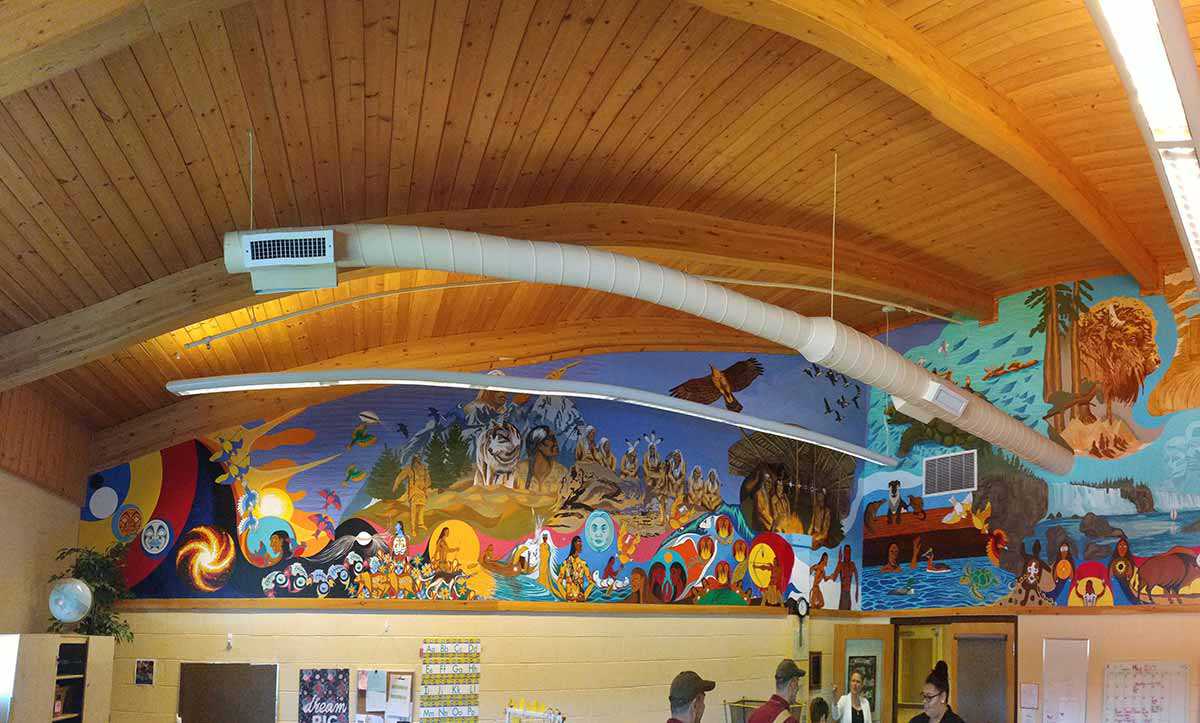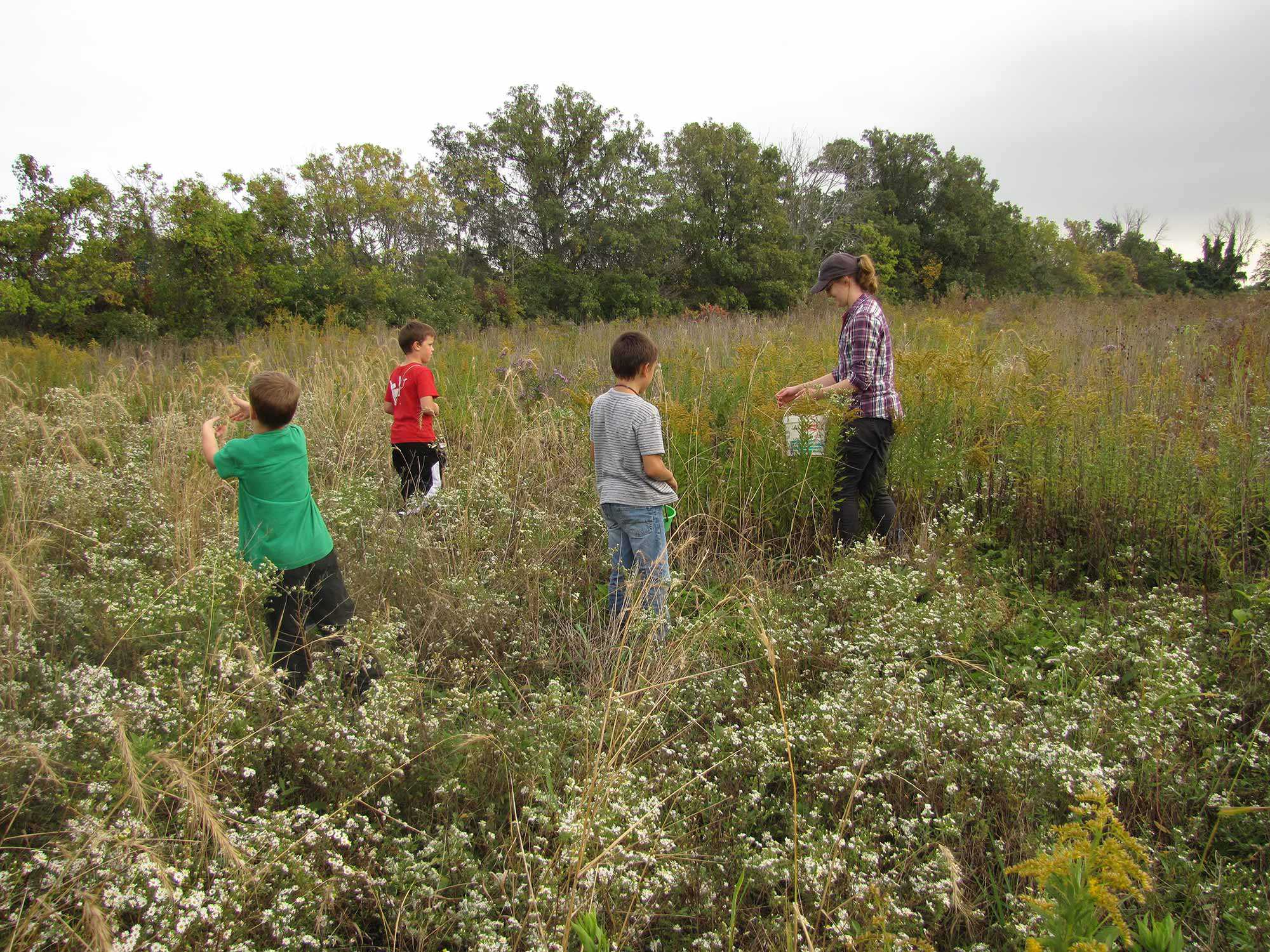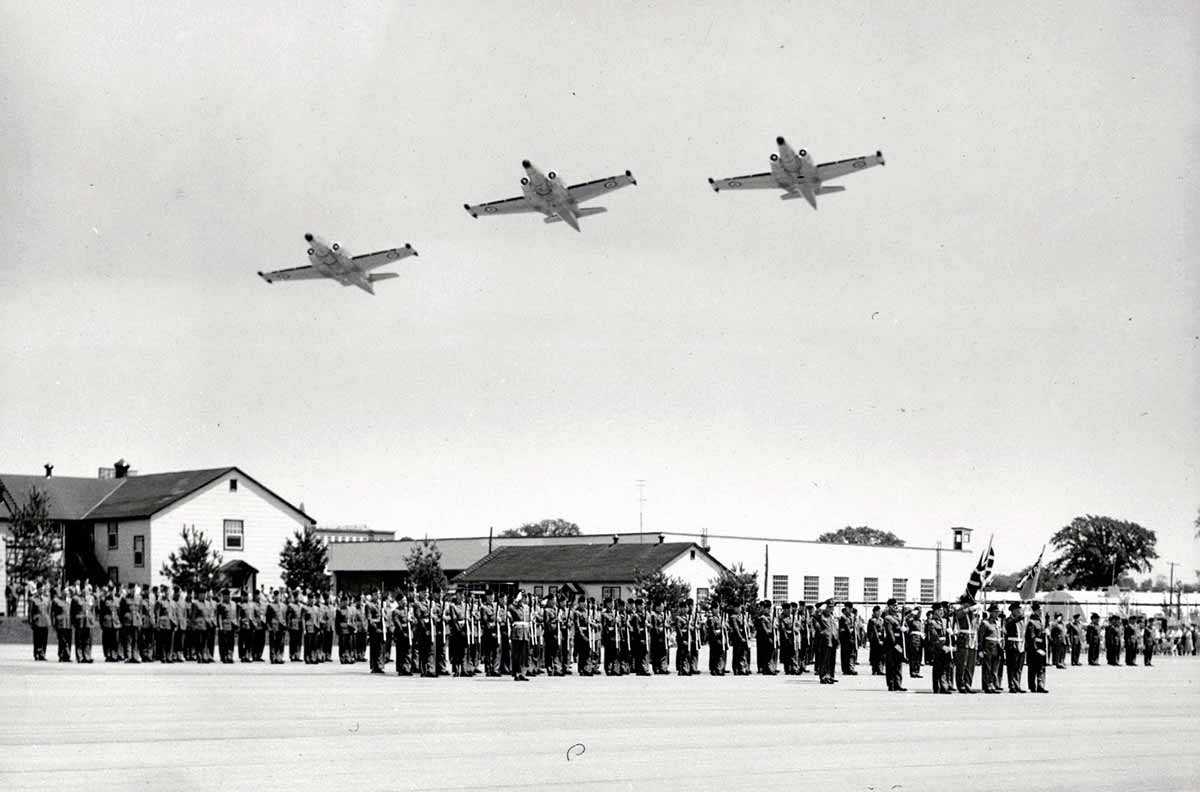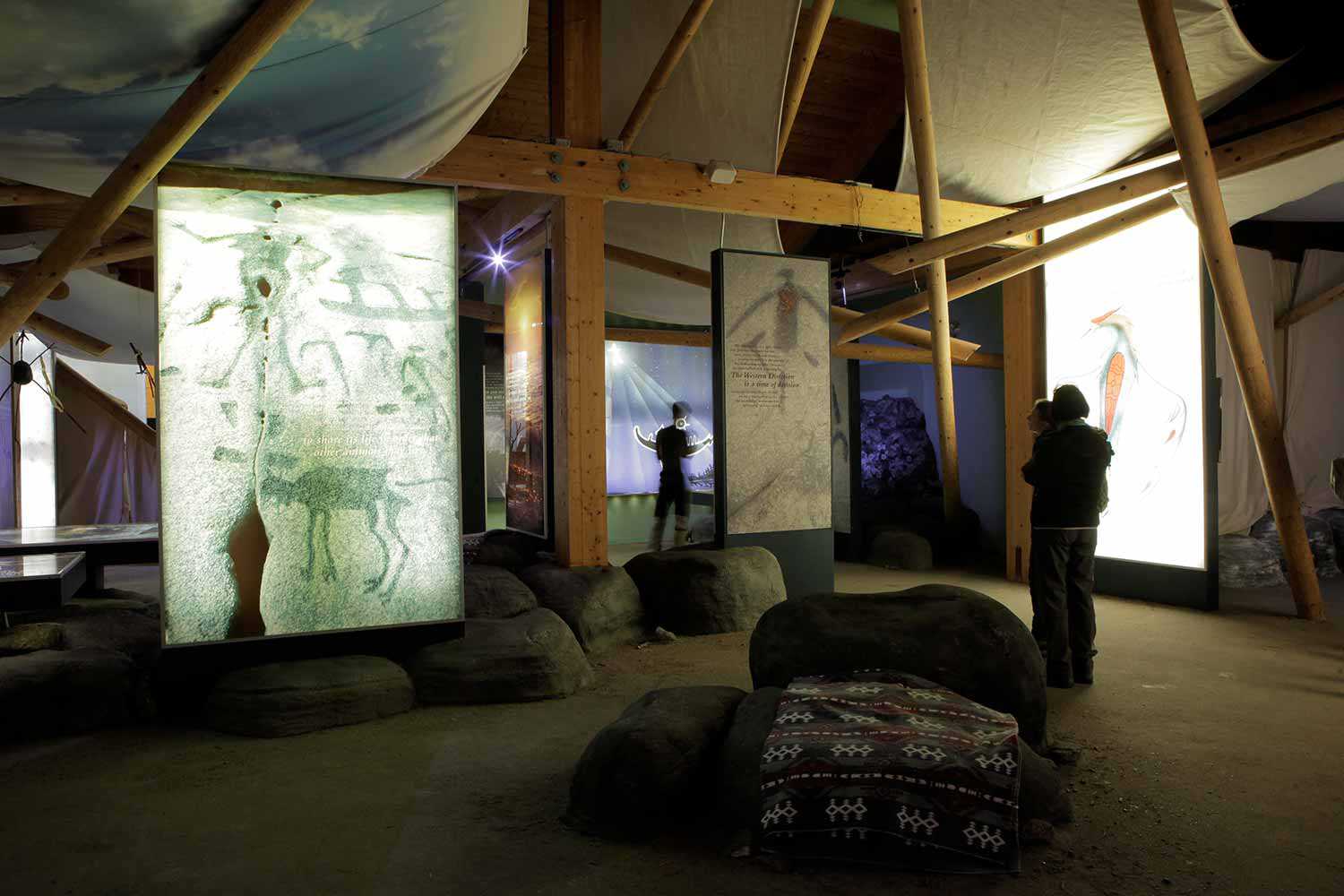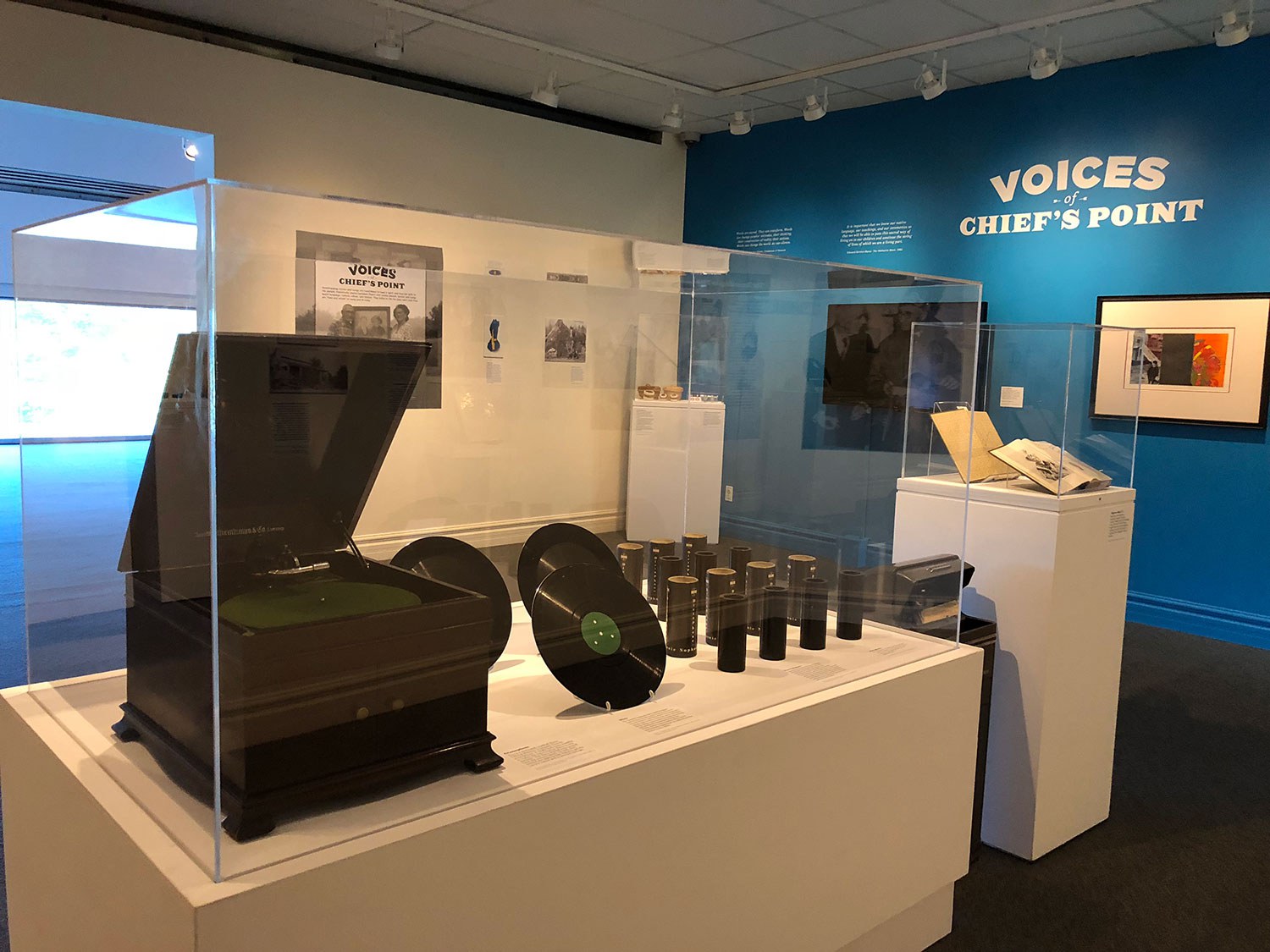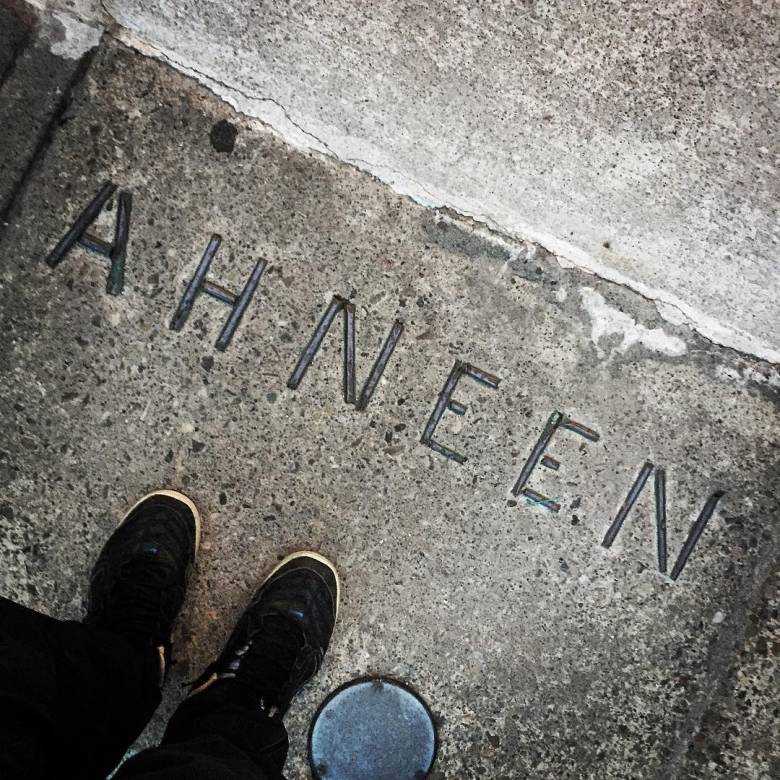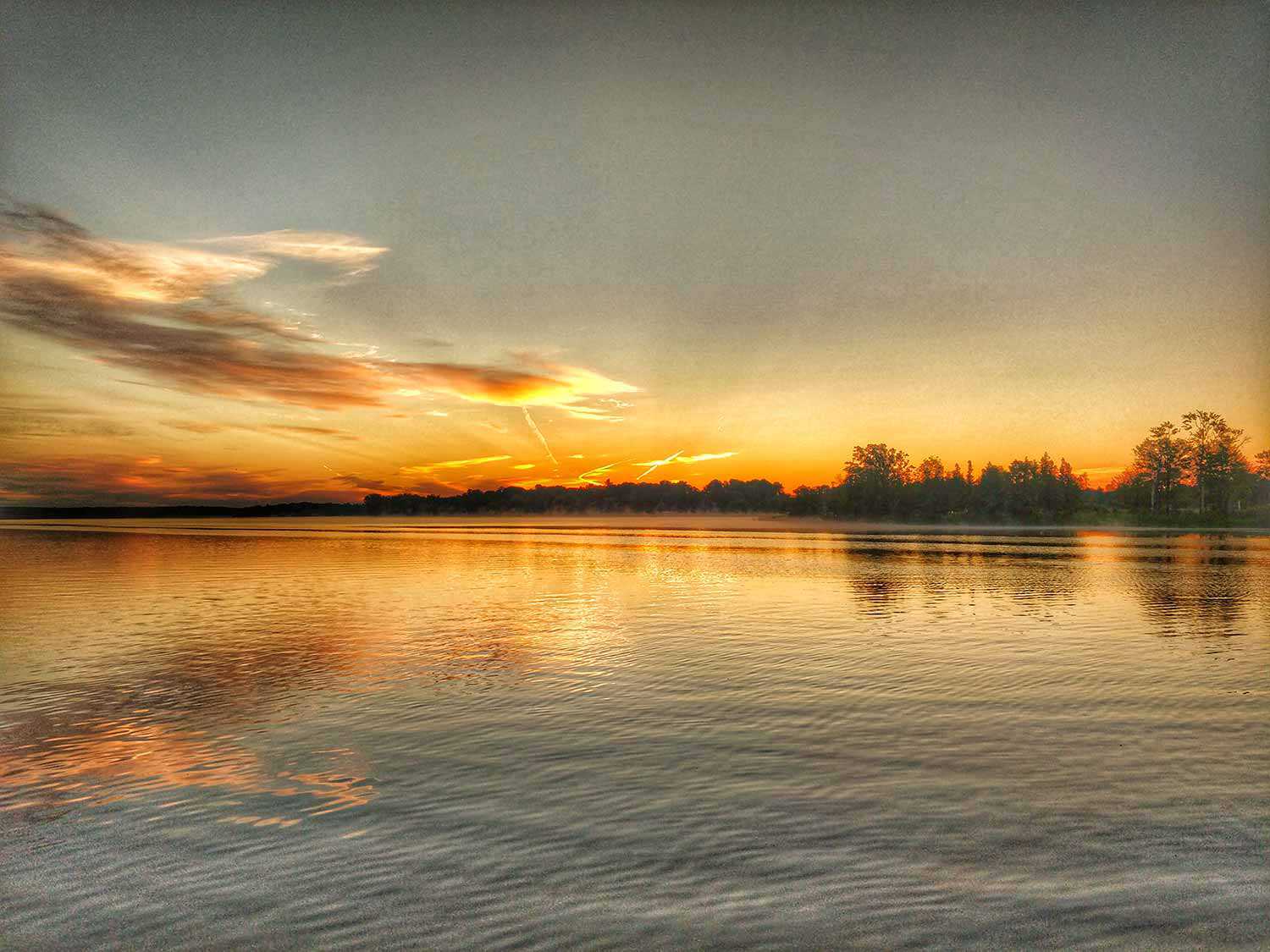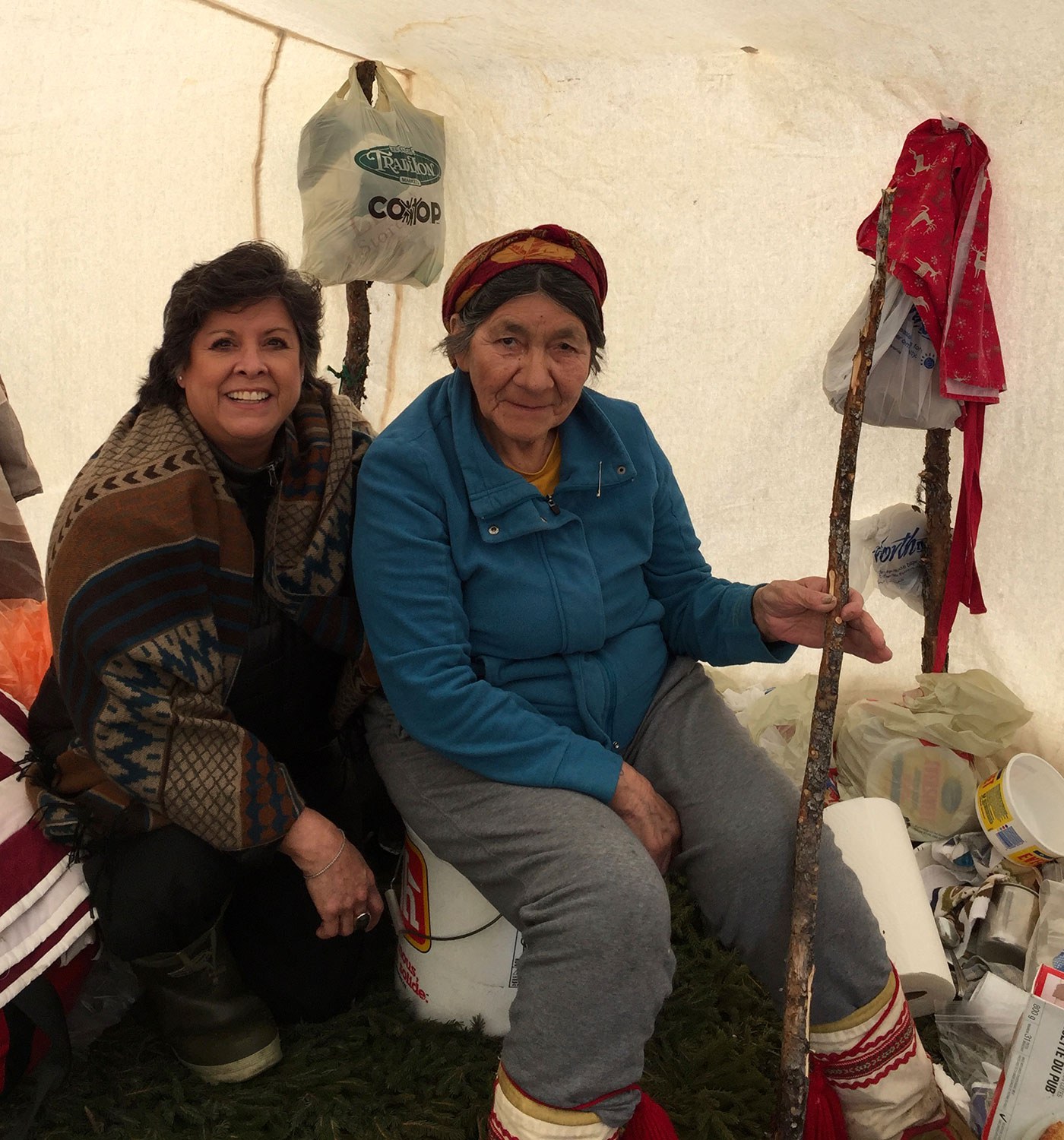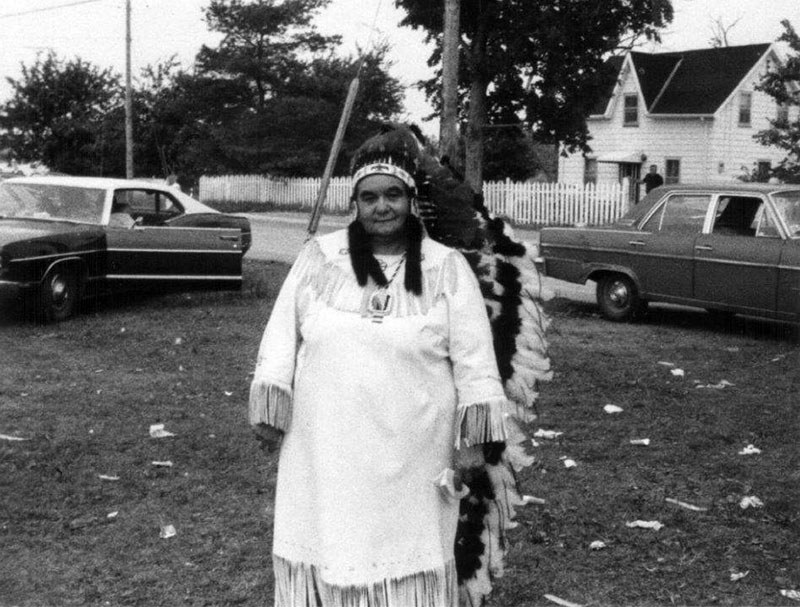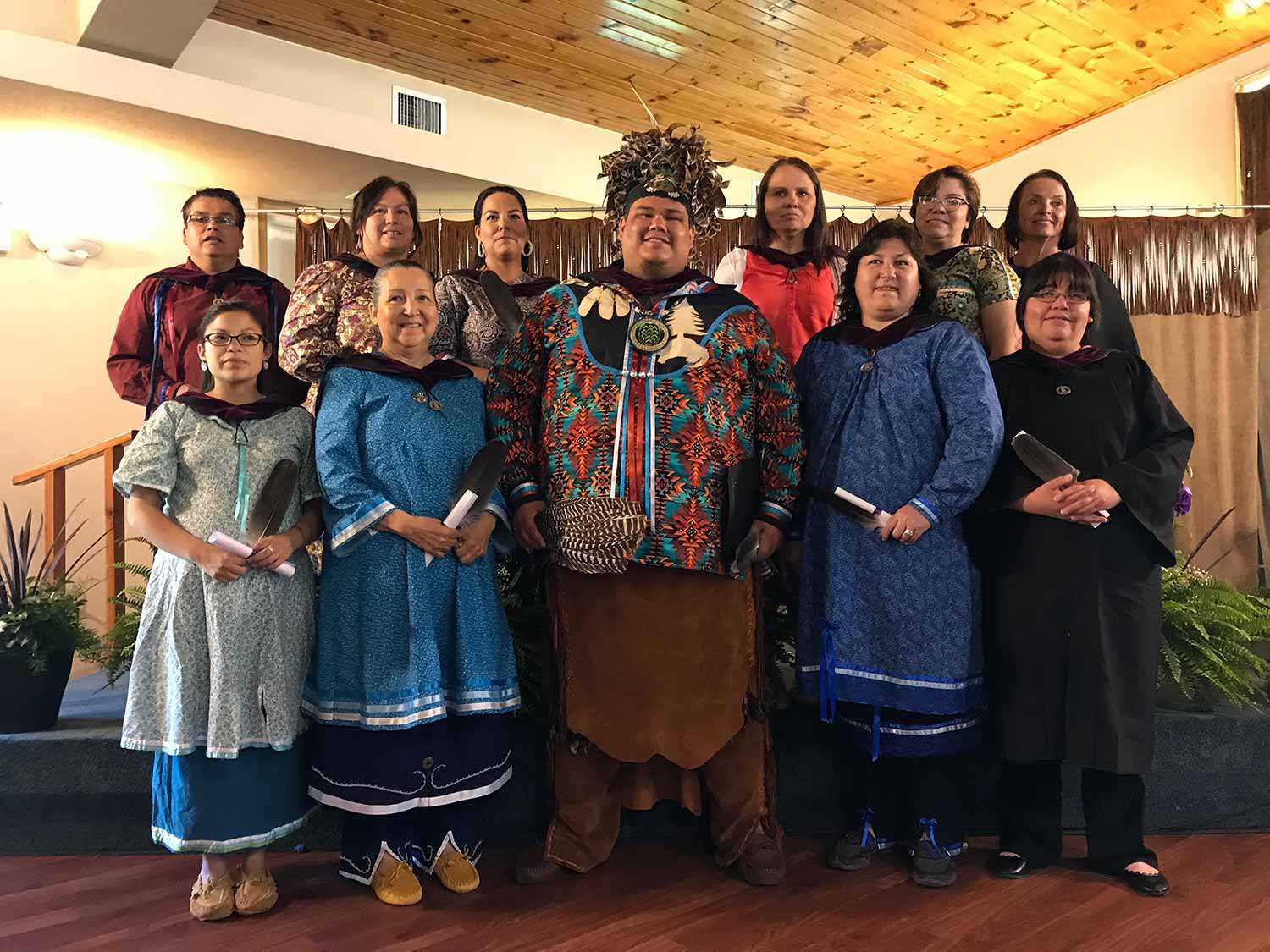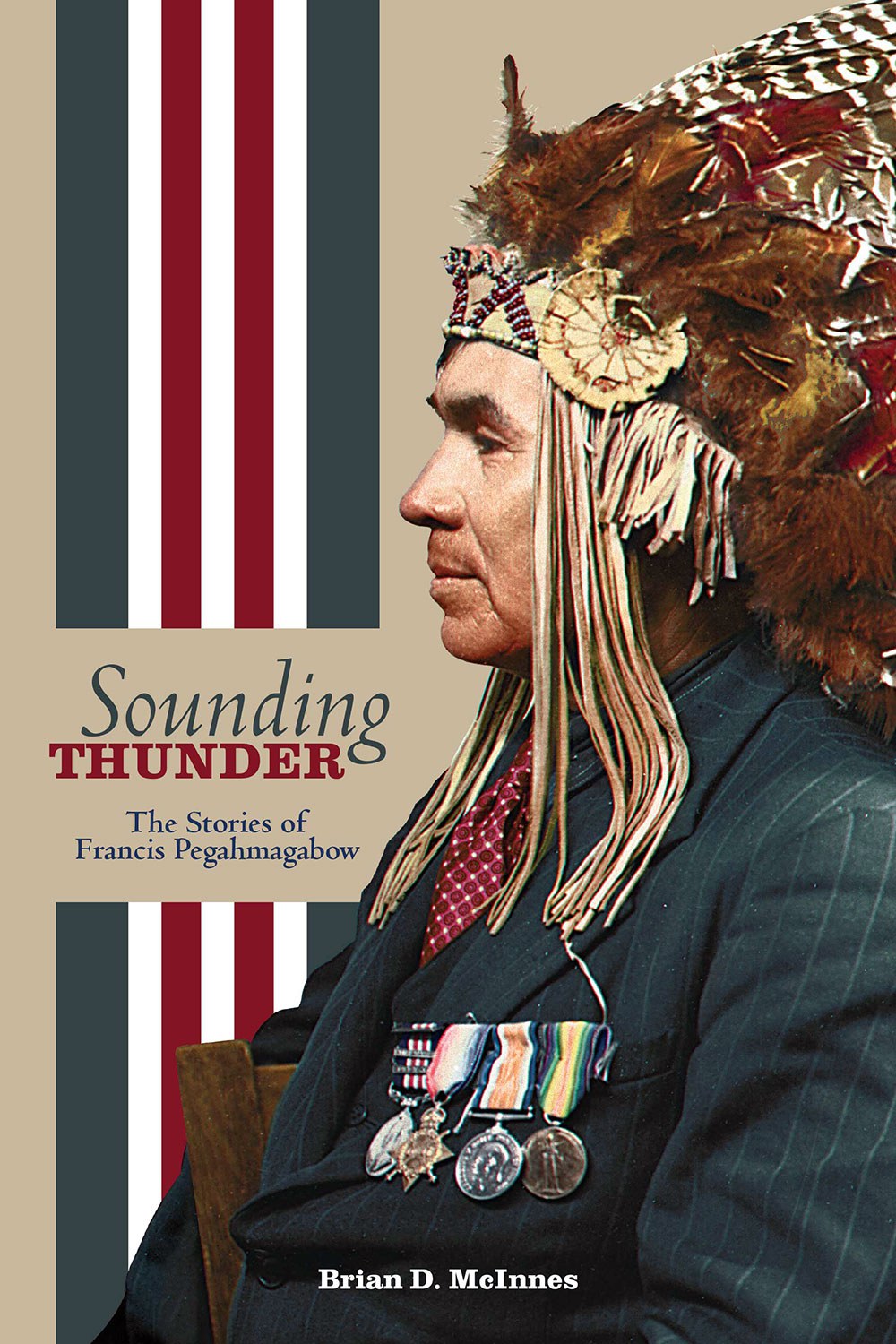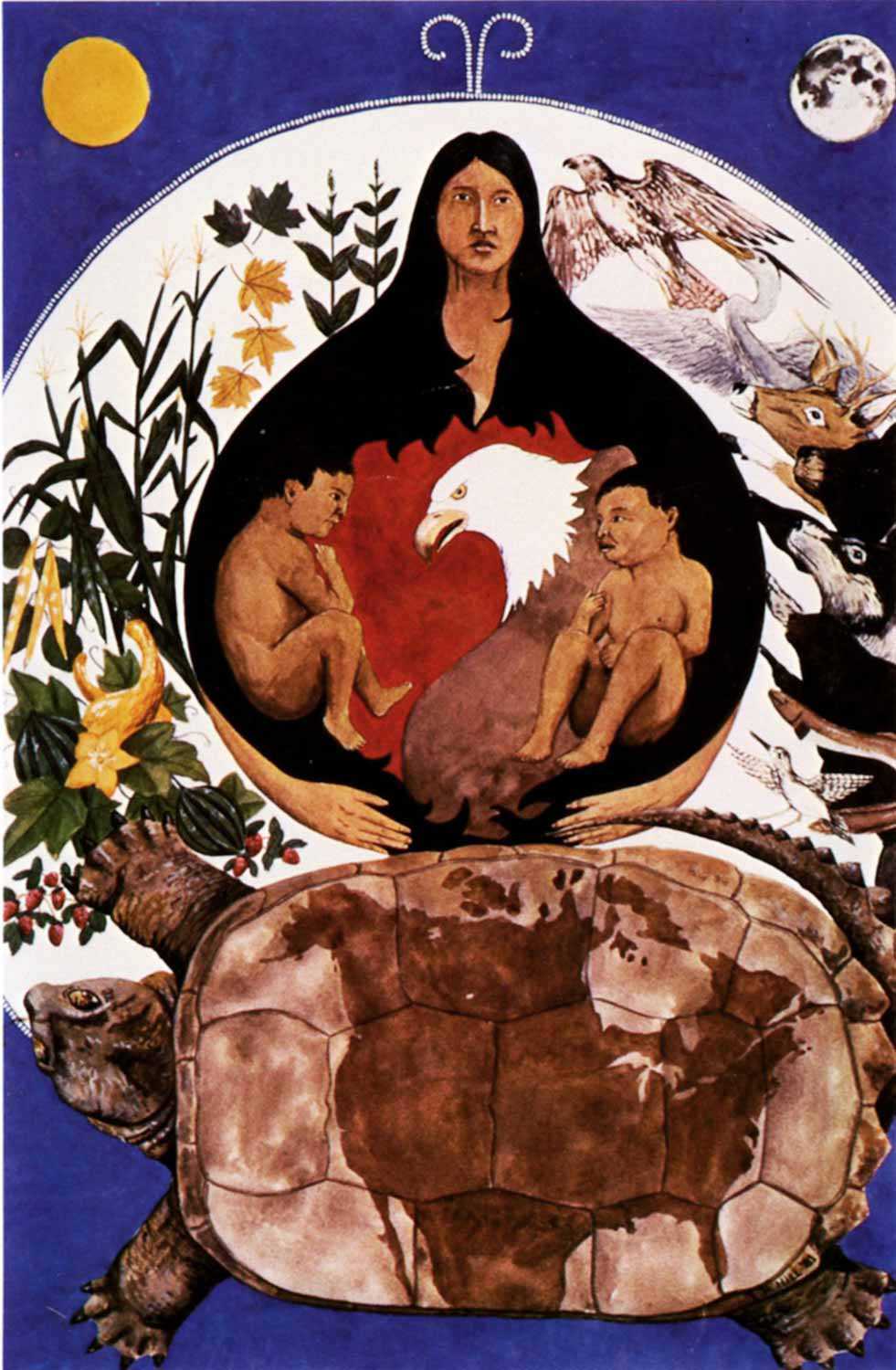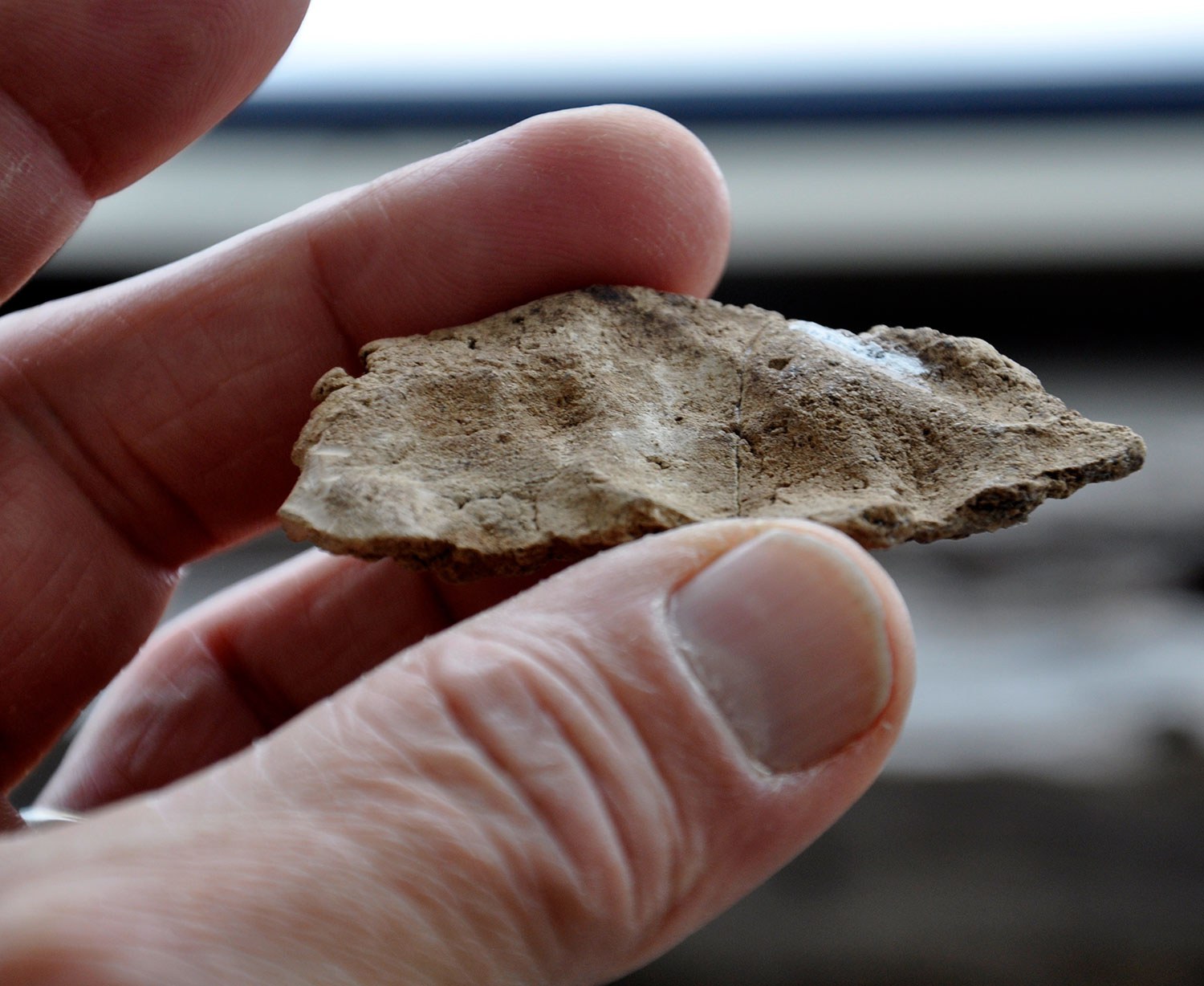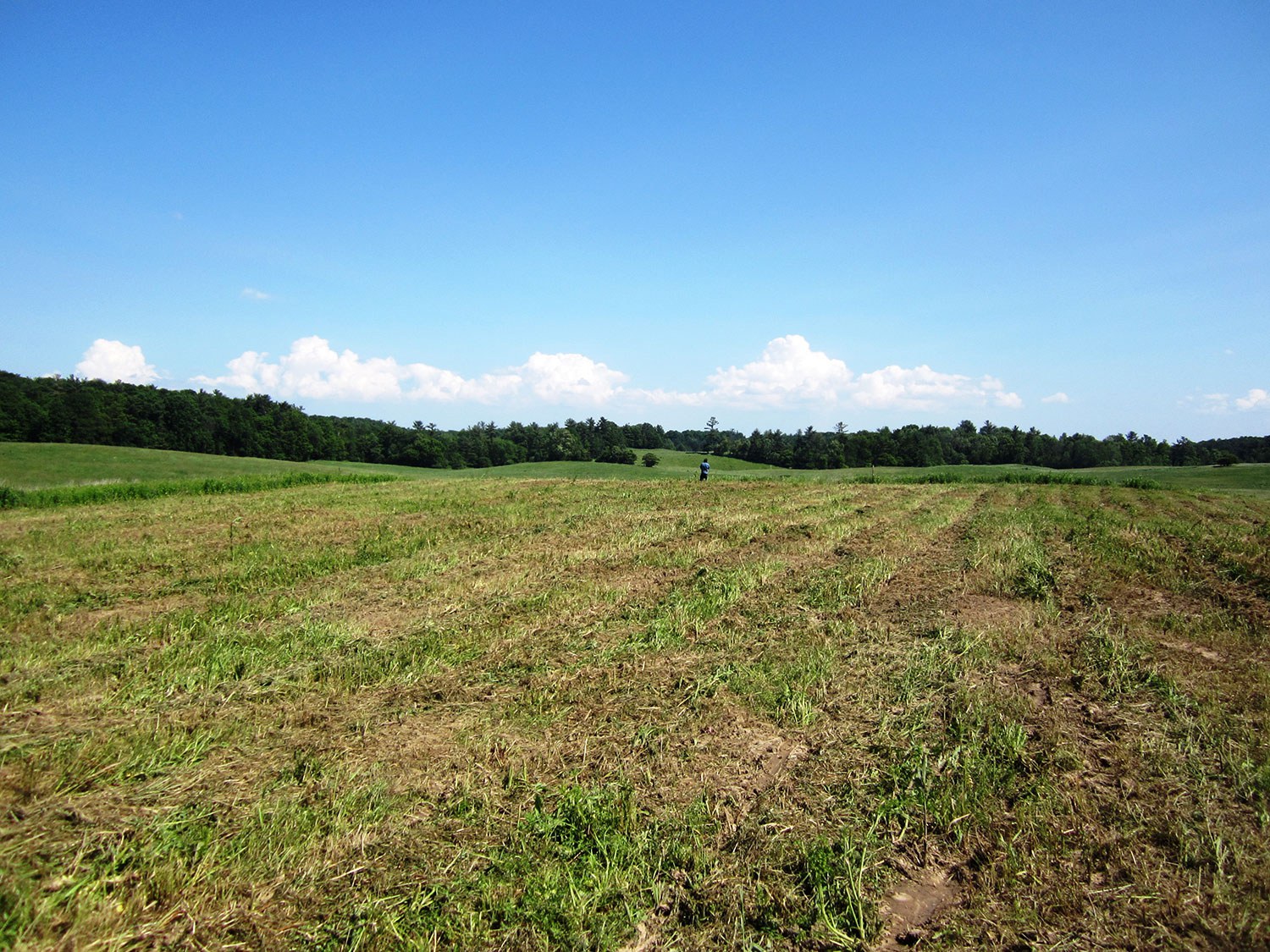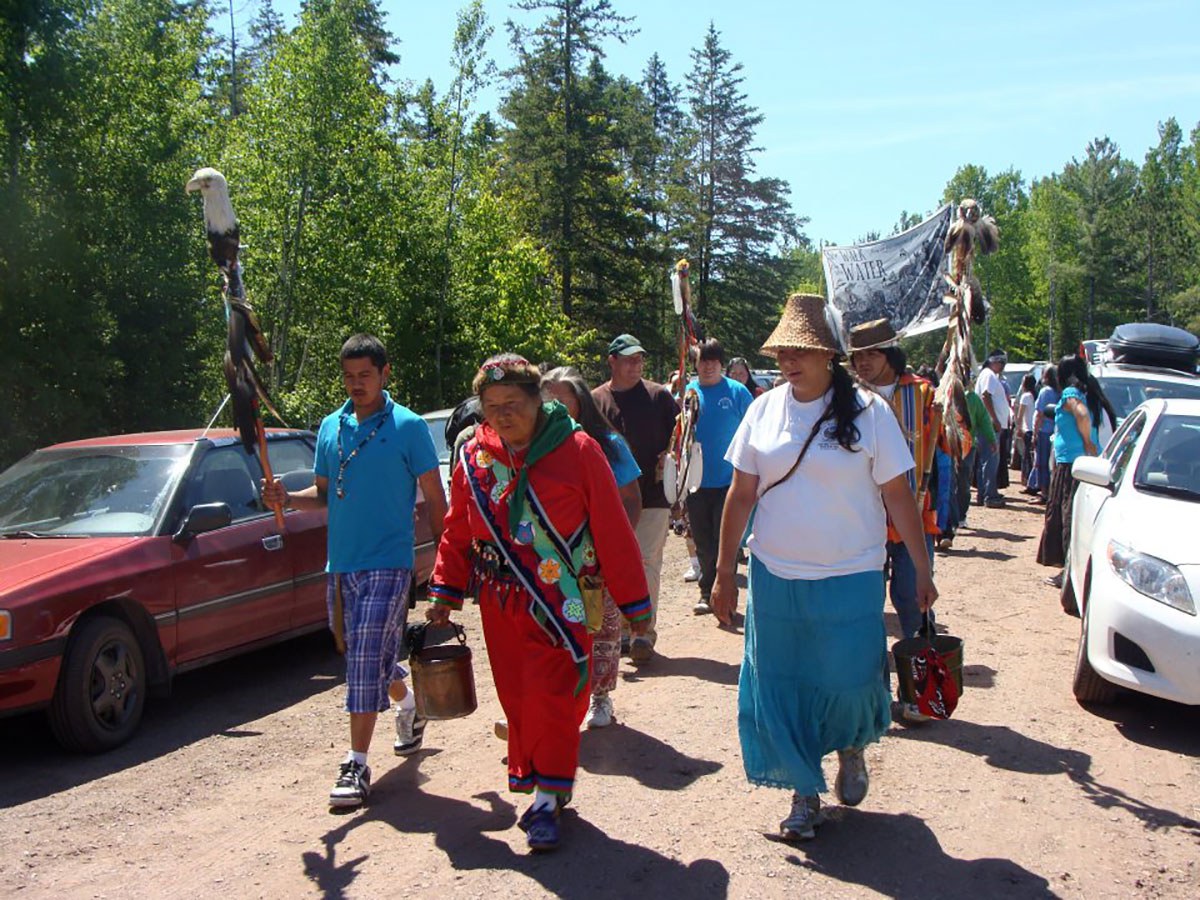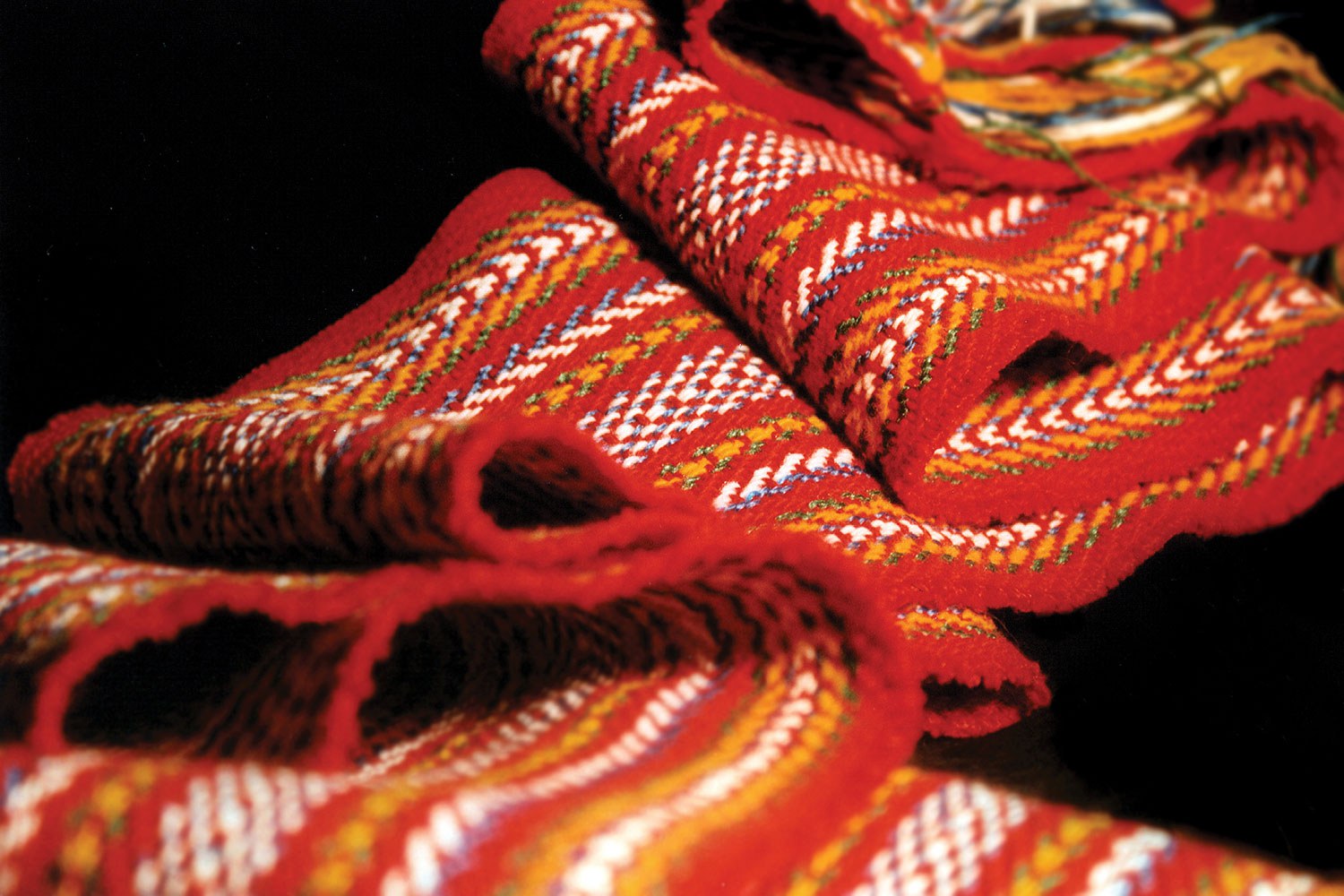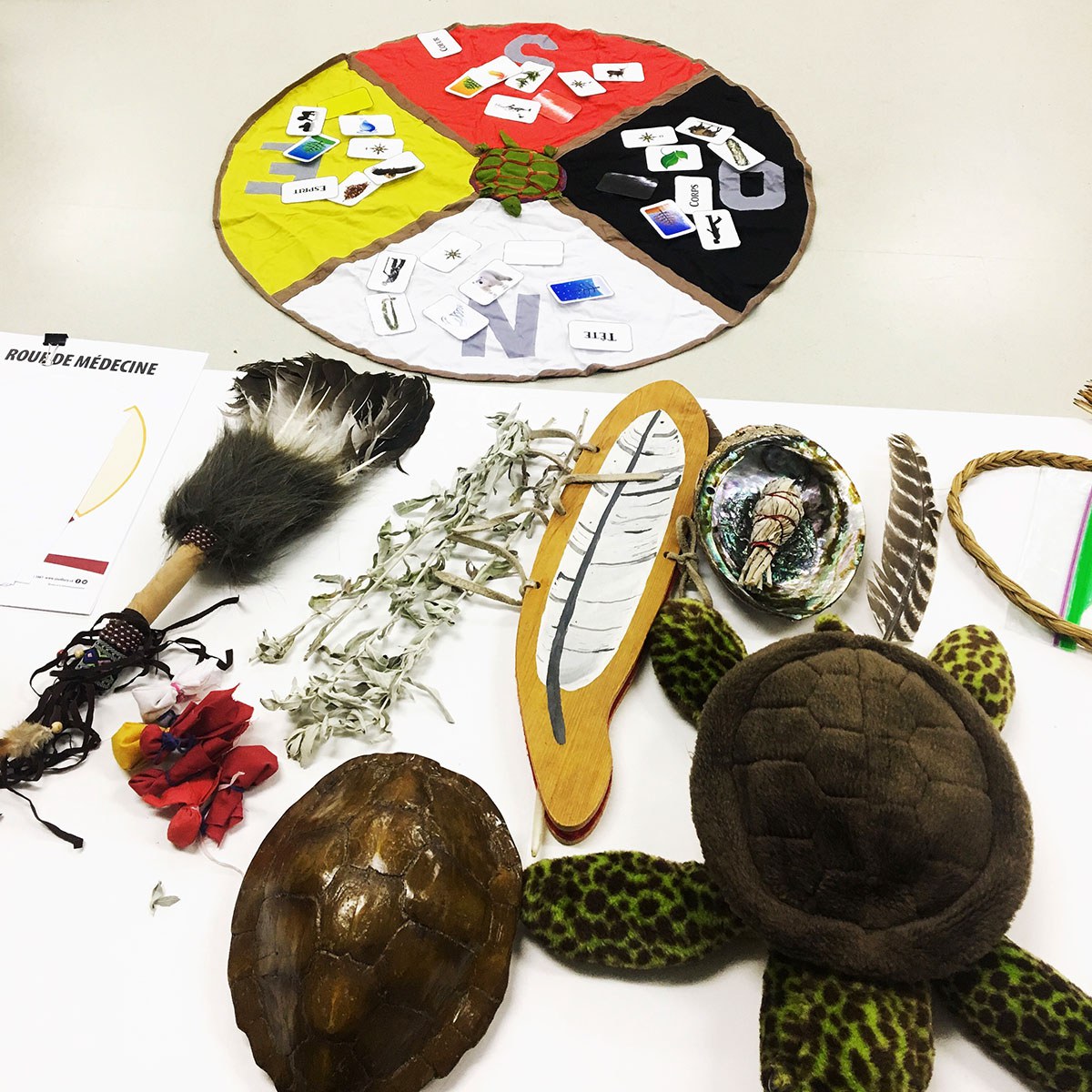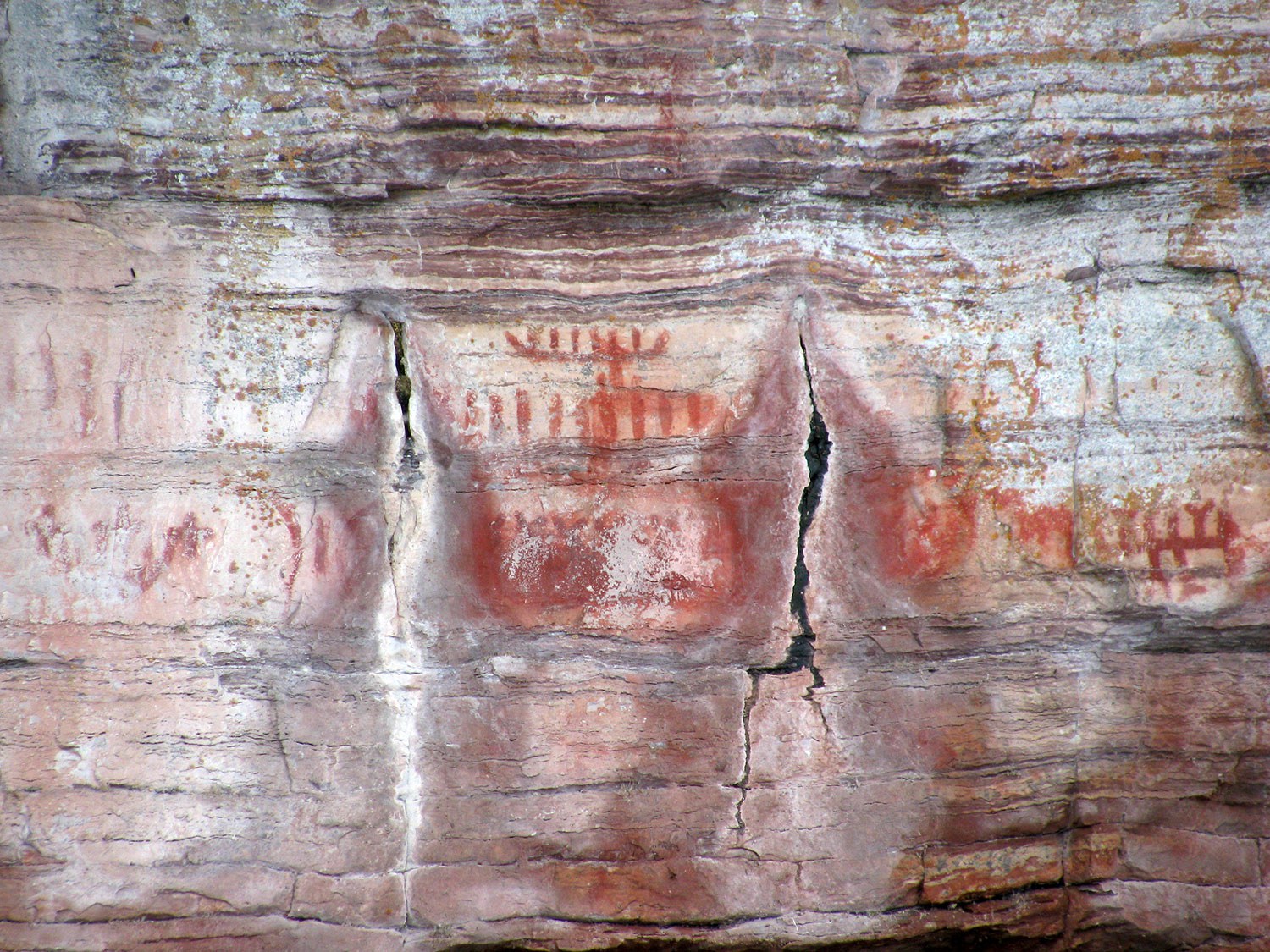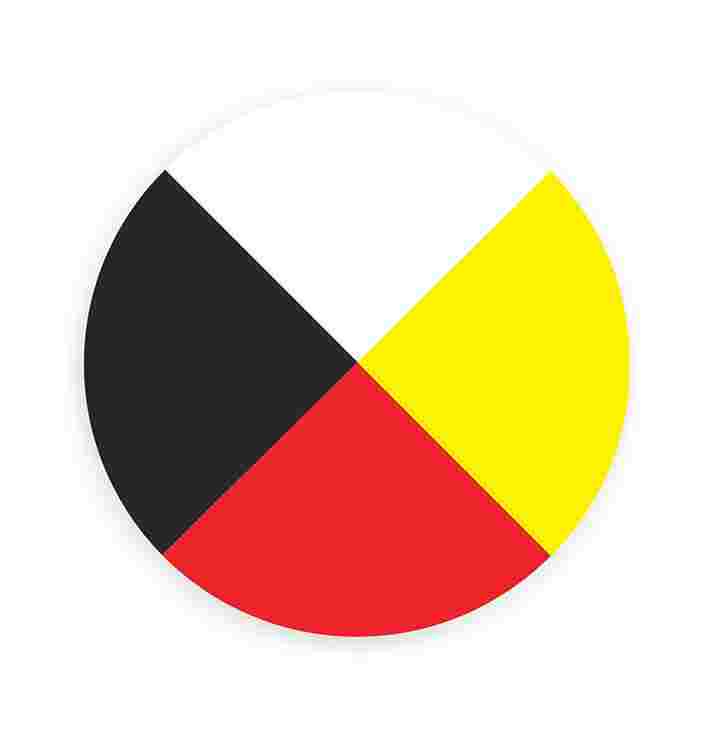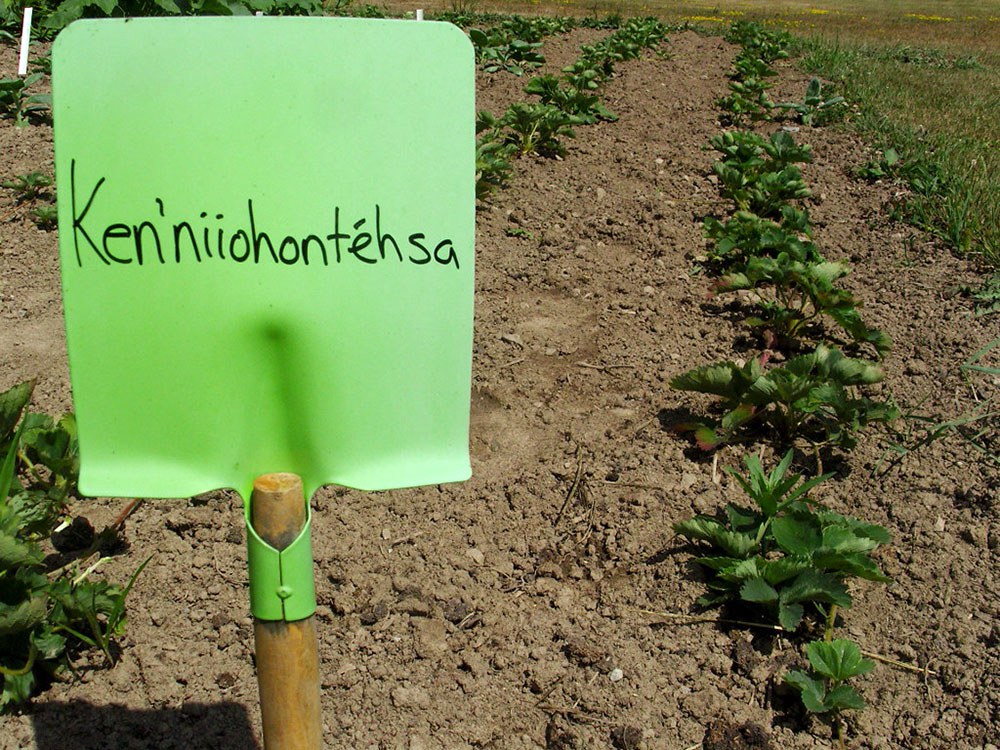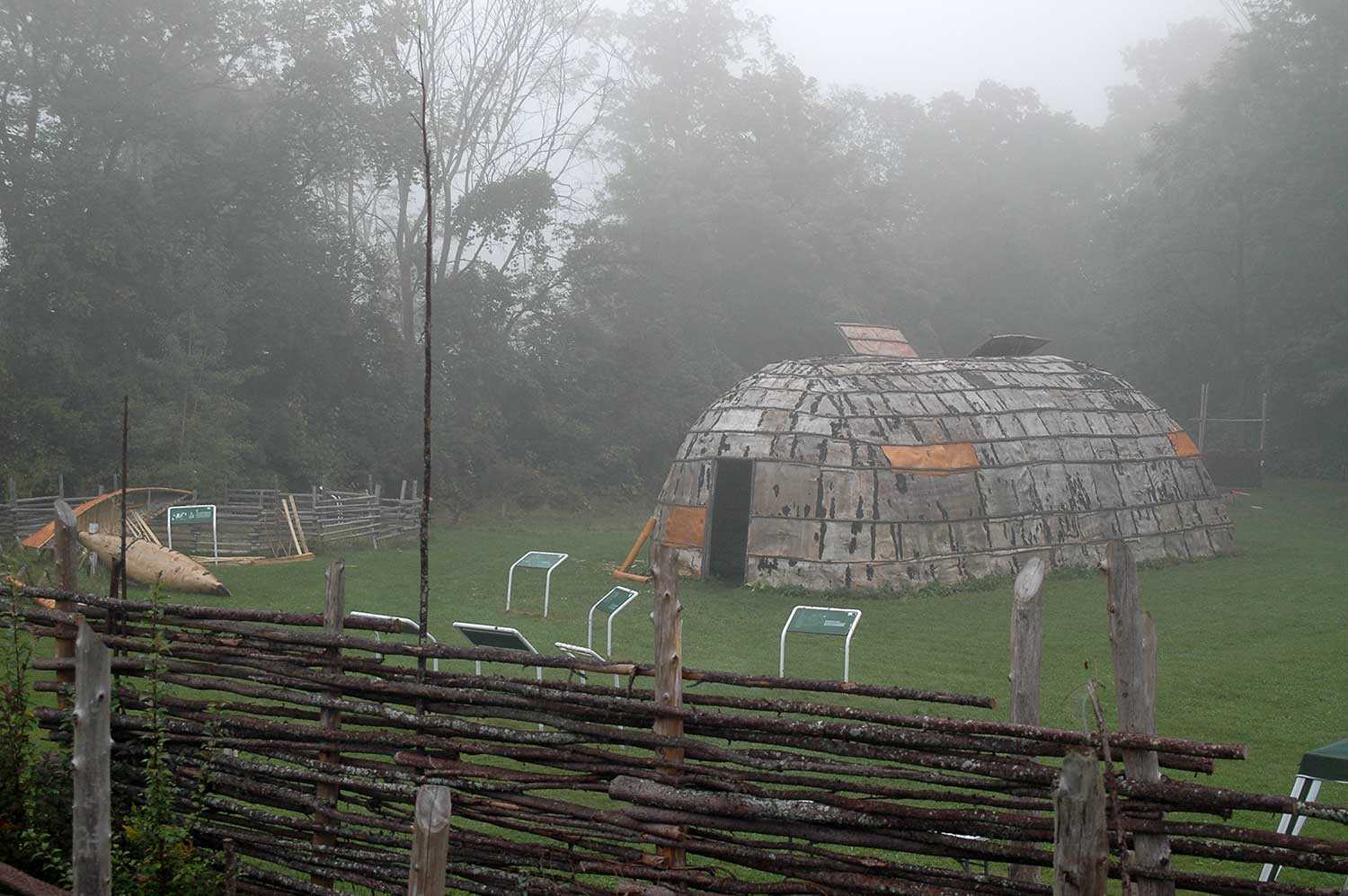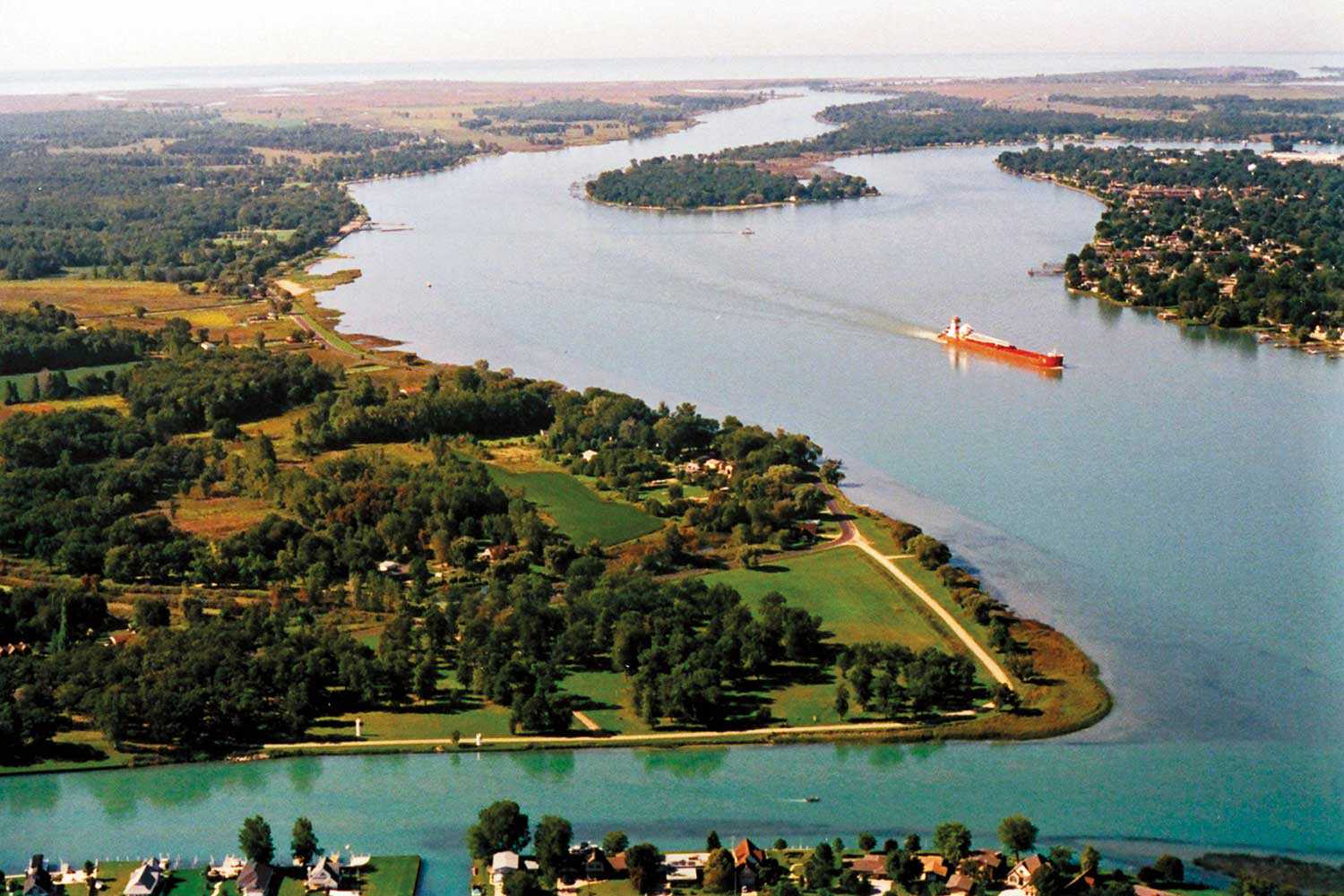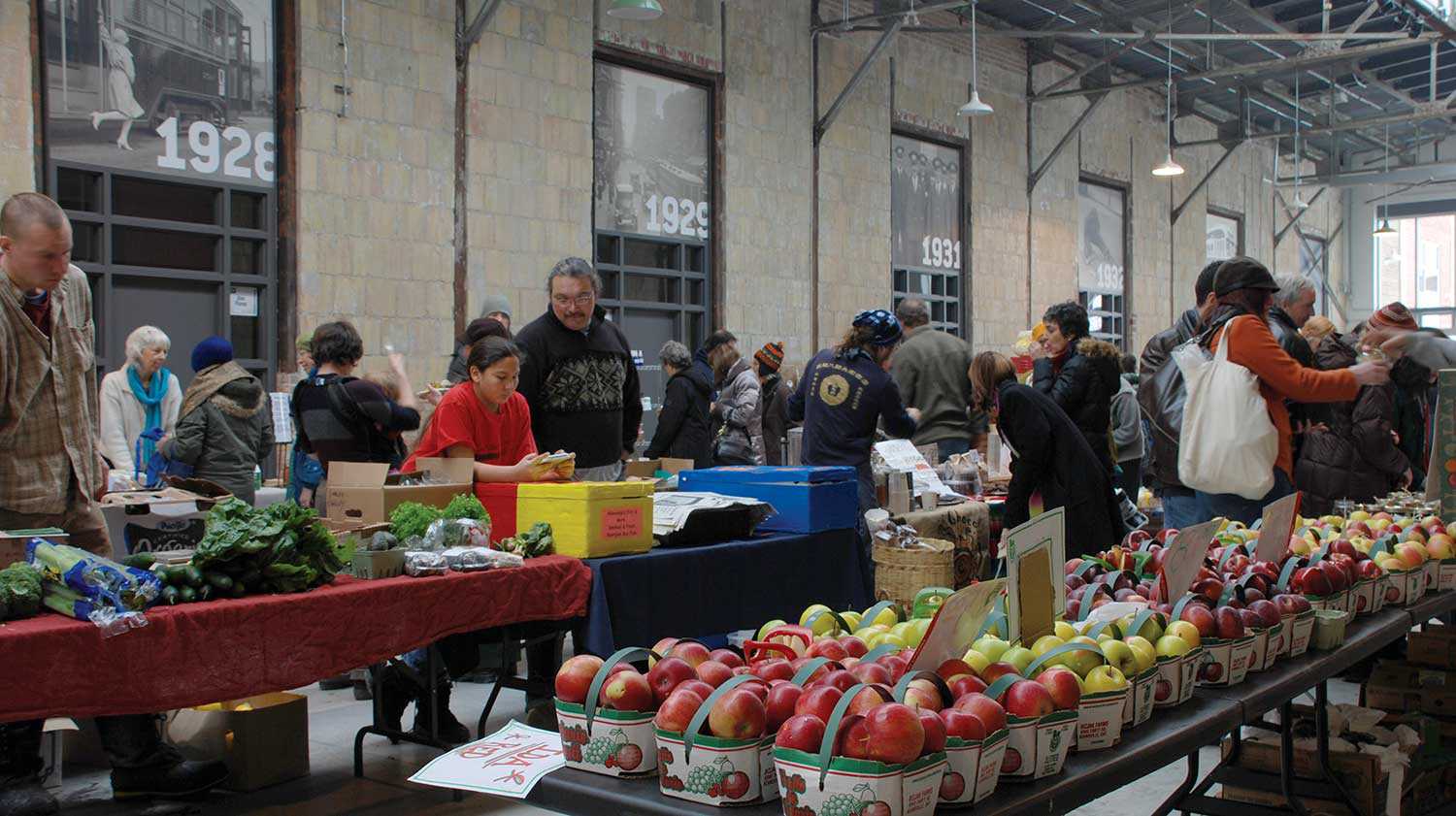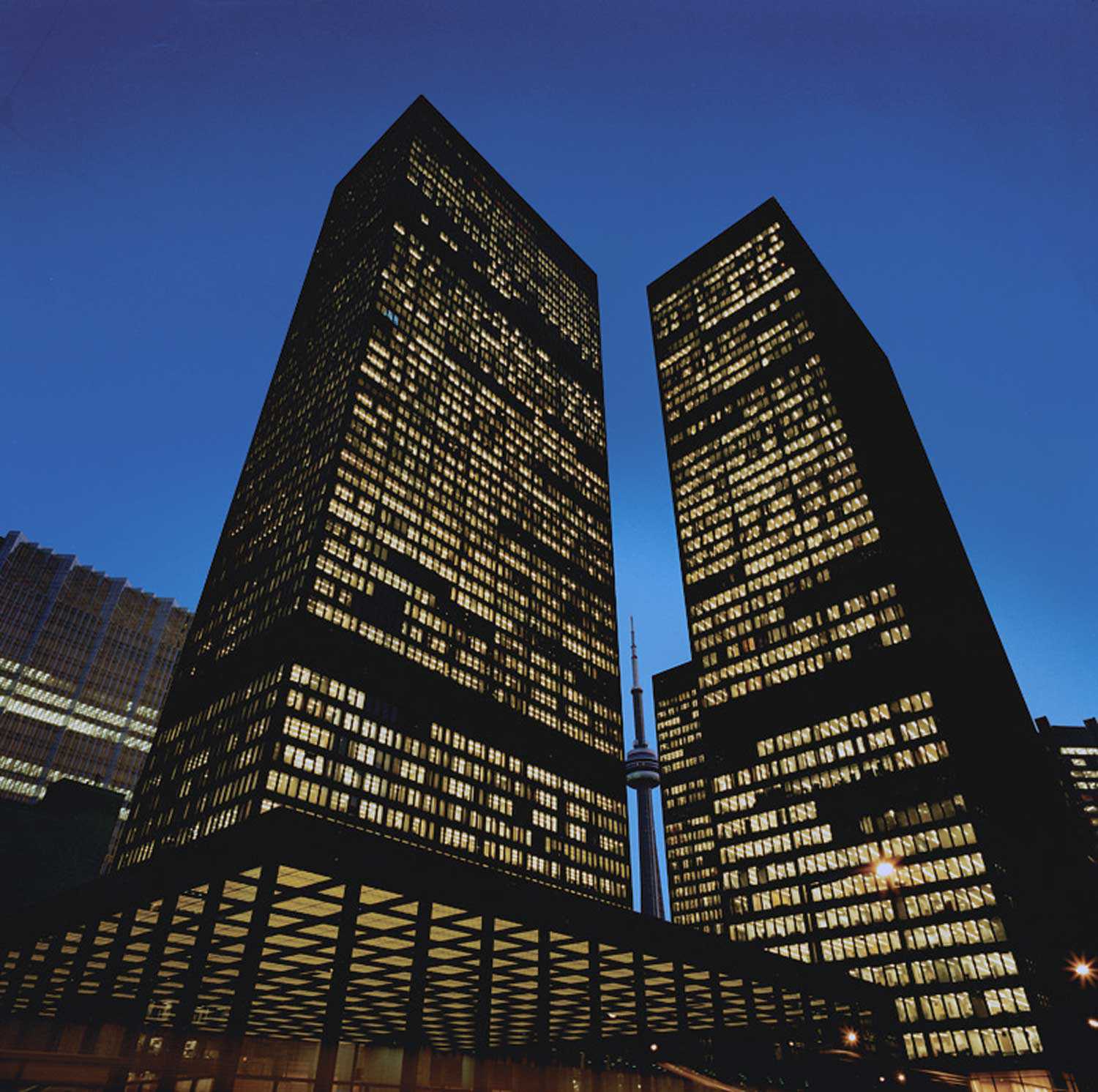

Browse by category
- Adaptive reuse
- Archaeology
- Arts and creativity
- Black heritage
- Buildings and architecture
- Communication
- Community
- Cultural landscapes
- Cultural objects
- Design
- Economics of heritage
- Environment
- Expanding the narrative
- Food
- Francophone heritage
- Indigenous heritage
- Intangible heritage
- Medical heritage
- Military heritage
- MyOntario
- Natural heritage
- Sport heritage
- Tools for conservation
- Women's heritage
Remembering our ancestors
Economics of heritage, Indigenous heritage
Published Date: Sep 07, 2018
Photo: Kiinwin Dabaadjmowin “Our Story,” completed in 2002 (detail)
“The importance of knowing your story is to have a sense of belonging and if you have this, you will have a sense of responsibility and if you have this, you will have a sense of peace.”
Kiinwin Dabaadjmowin “Our Story,” completed in 2002, is located on the library walls of Lloyd S. King Elementary School, New Credit First Nation Reserve. It was commissioned by the Mississaugas of the New Credit First Nation.
The medium is acrylic on plaster walls; it covers 93 square metres (1,000 square feet). The production time was approximately nine months, including the time to develop the concept drawings. Philip Cote was the lead artist and designer, with artist Tracey Anthony.
Kiinwin Dabaadjmowin “Our Story” visually tells the Creation Story of the Anishinaabe people. The Creation Story is used as a teaching and language tool to help the students in Lloyd S. King Elementary School learn about their identity and history through visual storytelling.
The Lloyd S. King Mural project used professional and local aspiring Aboriginal student artists to create a visual depiction of the history of the Mississaugas of the New Credit First Nation.
The larger, realistic scenes were all designed by artist Philip Cote, whose inspiration for the mural was found in the teachings given by Edward Benton-Banai in The Mishomis Book. Artist Tracey Anthony designed and painted the symbolic and stylized images along the bottom of the mural. The first section of the mural depicts the beginning of the Anishinaabe Creation Story and the life of the Indigenous peoples pre-contact and before colonization. The second section shows the transition from woodland life to village life at the Credit River in Mississauga, and the move to the present-day location at New Credit Reserve with Chief Peter Jones. It also depicts the obstacles faced through the explorer, fur trade and European belief systems. The First and Second World War scene honours the many Indigenous members who enlisted. The residential school is an example of forced government assimilation. The third section depicts the predictions from the seven prophets and hope for the future. It shows a brighter future through a reconnection to our culture, traditional songs and ceremonies brought forward by the drum – giving our children a sense of identity.
“The only way for Indigenous people to recover from trauma caused by 500 years of colonialism is to pick up the tools left by our ancestors. As it was said by the Seven Fires, Experiential Learning is the only way to experience blood memory in order to understand our true identity.”

